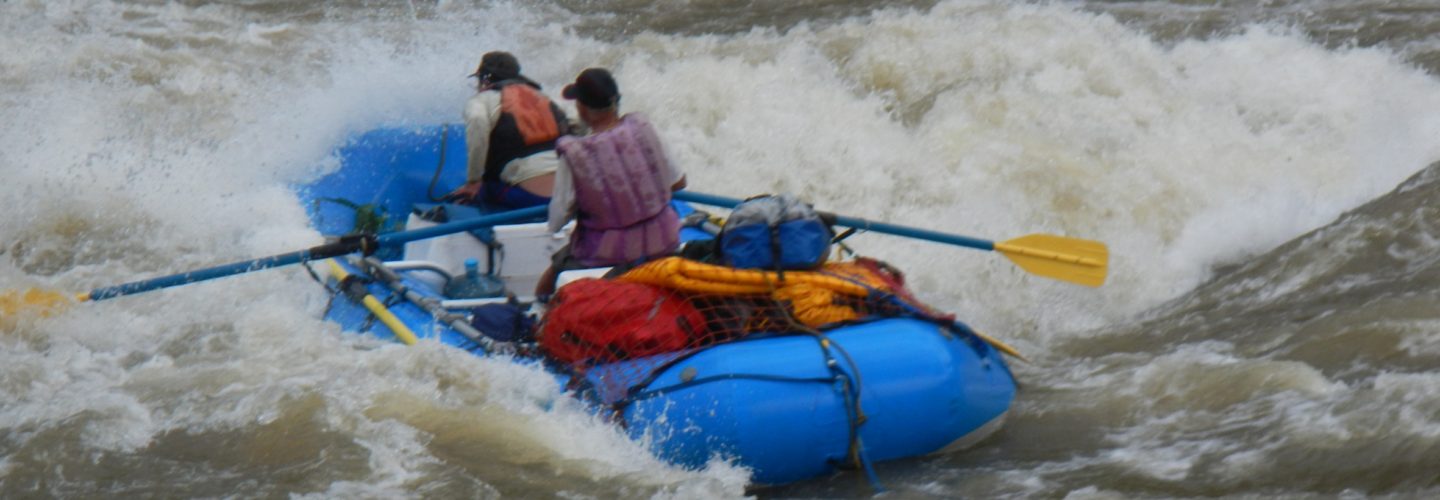Most who have stayed awake for the final six hours or so of the bus ride from Lima to Cusco have noticed the Pachachaca dropping abruptly just out of view of the bus windows, and surely have wondered where this little river goes. Sometime in late October of 2004, Brian Fletcher and I put in on the just below Abancay off of a spur road to a puente, which can be reached by taxi from Abancay or from a bus with a little walking. Really, the put-in could be another several kilometers upstream, and there would be a little more whitewater, although the far upper stretches probably need higher water, and I wouldn’t recommend running into the Apurimac without low flow.
I think we estimated our section to be about 40 km, and ran it in two relatively long days, characterized by excellent class IV, V, and VI whitewater, numerous portages, and a very scenic and remote gorge. We maintained a fast pace and were not able (only being two of us) to set up extensive safety—larger groups should plan on an extra day. We estimated the flow to be about 500 , and probably should recommend that the run be done at low water only. If you’ve got a few days the is well worth it for a change of character from most of the other east-slope rivers. Keep an eye out for the torrent ducks—they ran a number of rapids we didn’t even consider.
The details of the run are somewhat like what follows. Immediately after our put in, several rapids cut through a hard bedrock gorge. After a few km of flat, meandering current, the signs of civilization on the hillside give way to an increasingly dramatic gorge, gradient picks up for numerous read and run boulder rapids. Look out for a newer landslide rapid in this section that is likely to change year to year, and which backs up a considerable amount of gradient. The rest of the first day consisted of very fun class IV and V boulder rapids, with the occasional class VI death-sieve rapid lurking out there to keep you scouting. Throughout this first day camping was ample; we did stop for the evening, however, at a particularly un-runnabledeath-sieve rapid that the morning after turned out to be a difficult portage and the last decent sleeping for a couple of hours.
DAY 2
The run passes through a number of short gorges, ranging in character from granite boulder drops (yippee) to funky, sieve-laden bedrock gorge drops . Many of the latter rapids are difficult to scout and have major safety hazards in the middle of otherwise clean lines due to the enormity of the boulders relative to the size of the river. As the river nears the confluence with the Apurimac, sparse vegetation and then jungle appear on the hillsides. Here, the Pachachaca cuts through a couple of short, though generally class VI gorges that at higher water might be very difficult to portage.
A few kilometers after the confluence is Puente Pasaje which is where most groups will take out. You can beat the heat waiting on the bridge, or enjoy some fresh cuy (not much else is served) at the hacienda. In the fall of 2004, combis came by every day Monday through Thursday, and charged around 20 soles (I think?) for a long hot passage to Andahuaylas. These schedules aren’t especially precise, and we would especially not recommend trying to get a ride on a Friday, when locals come out of the jungle woodwork to bring goods to market. On the way out, try to peer into the Rio Pampas, which begins near Ayacucho and runs into the Apurimac just a few km downstream of Pasaje
Henry Munter
